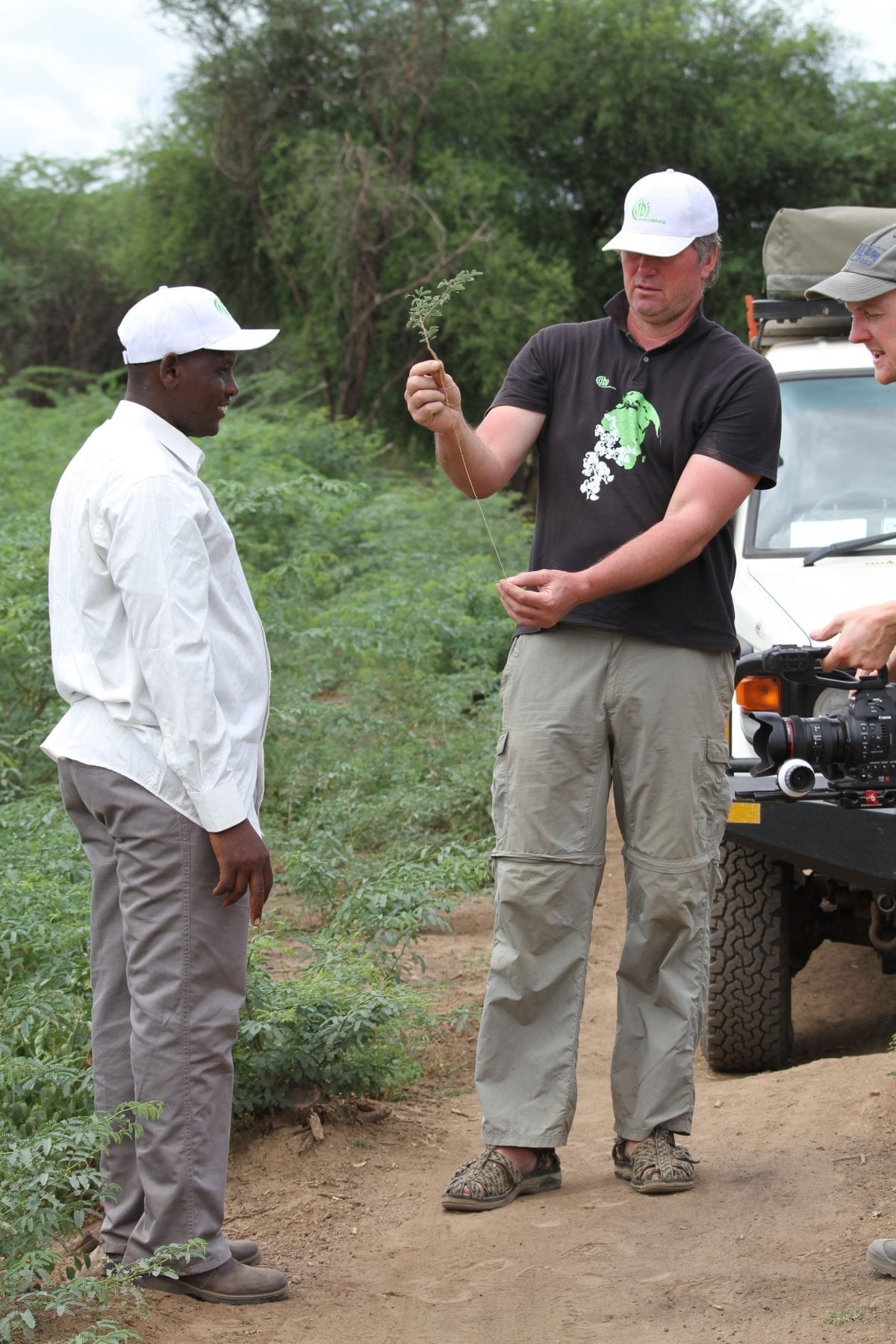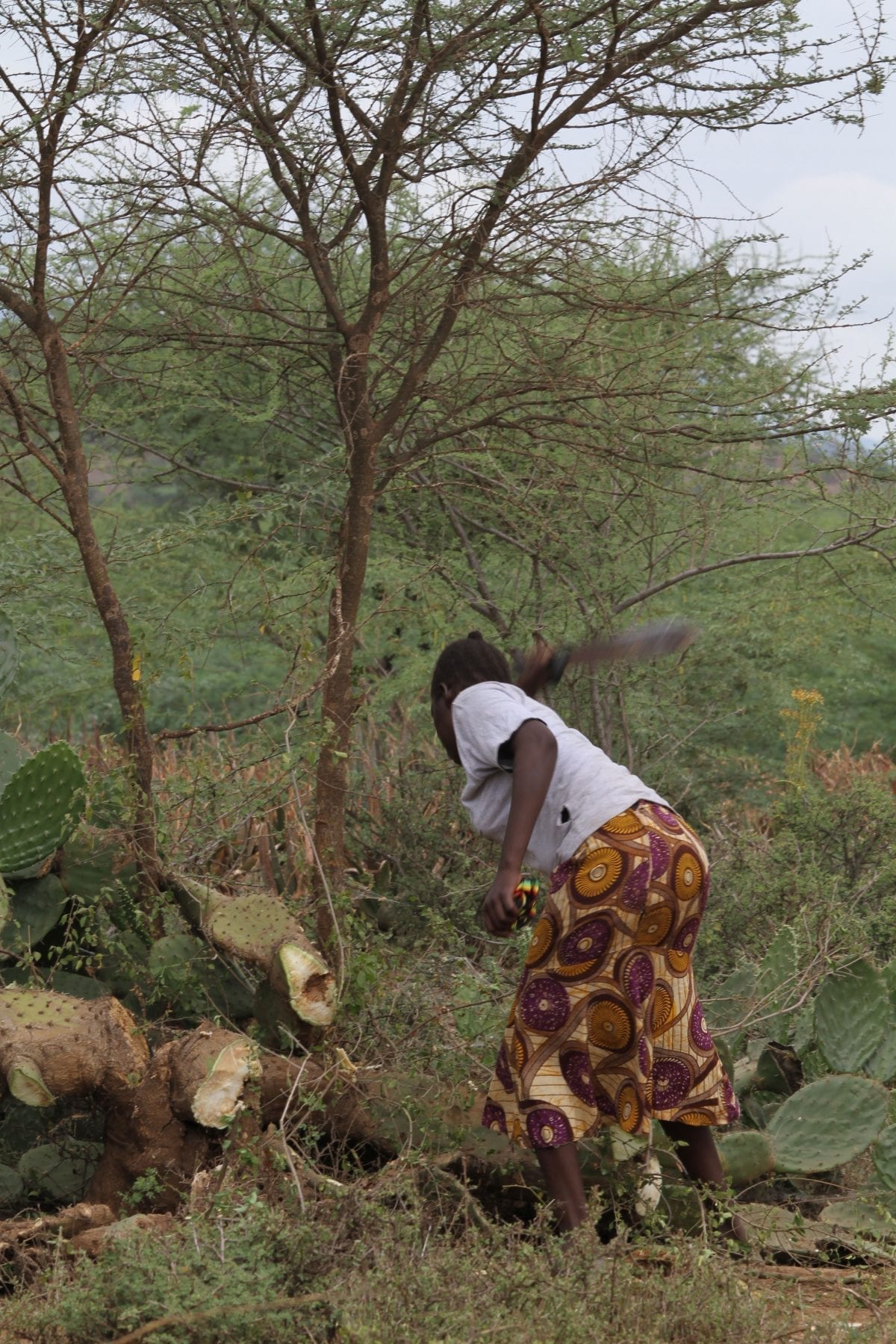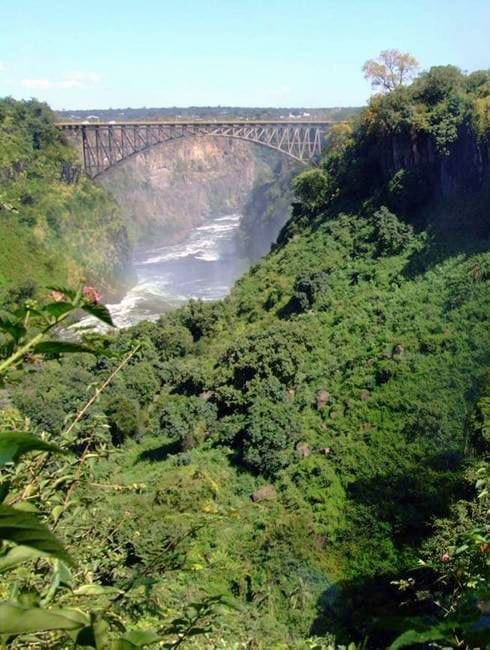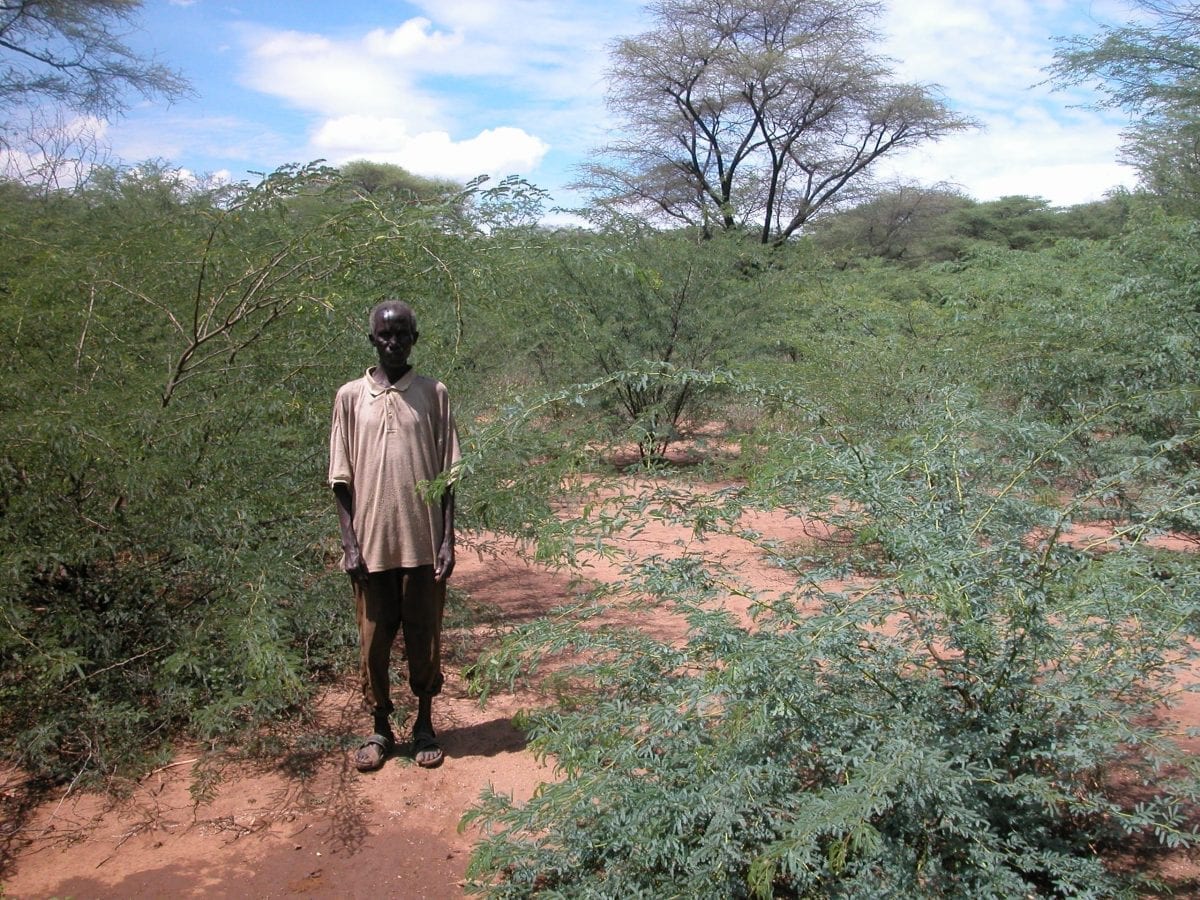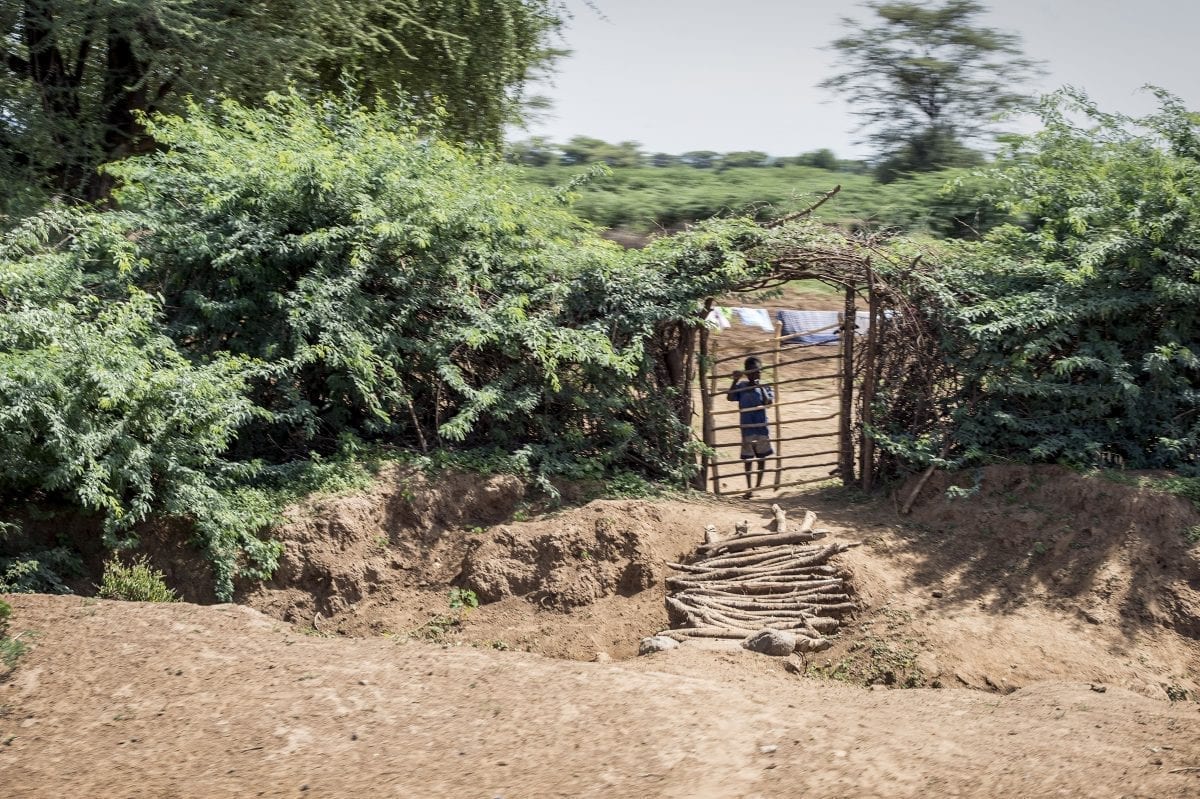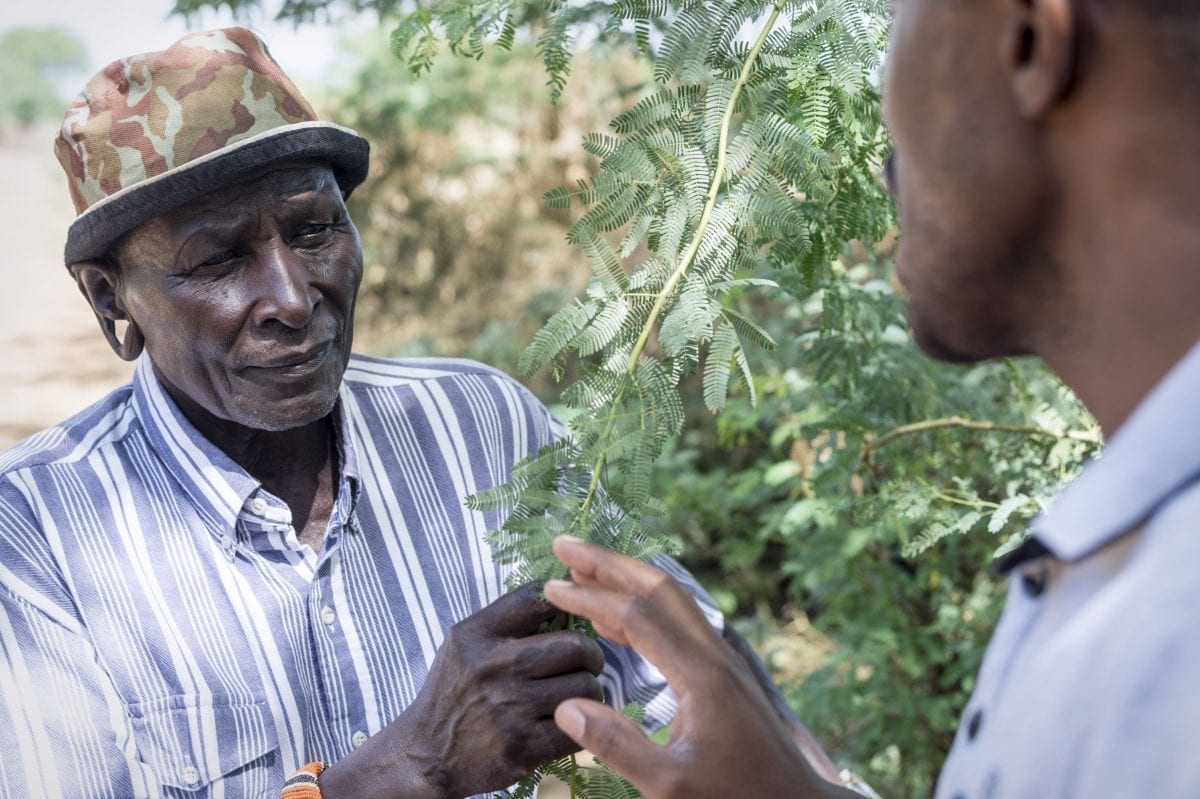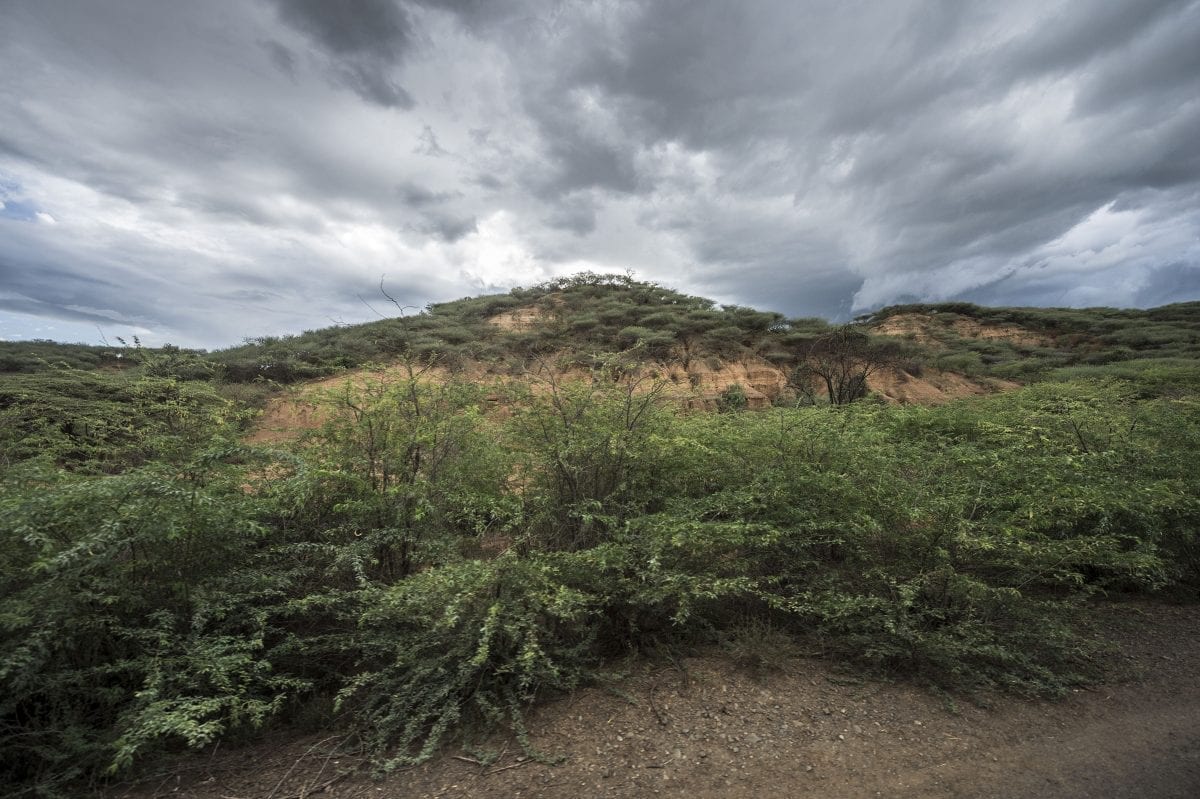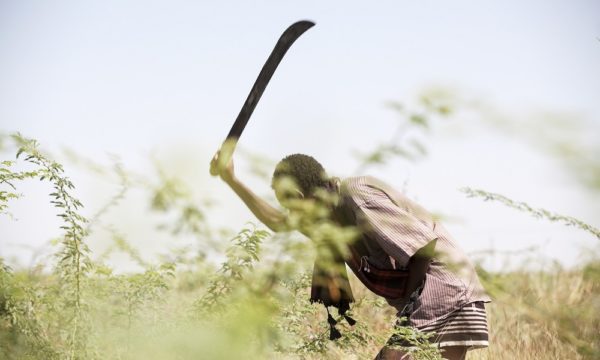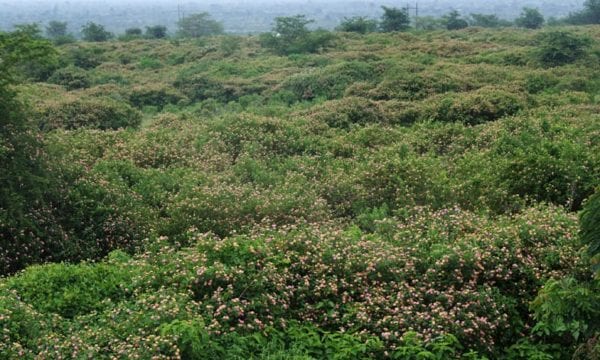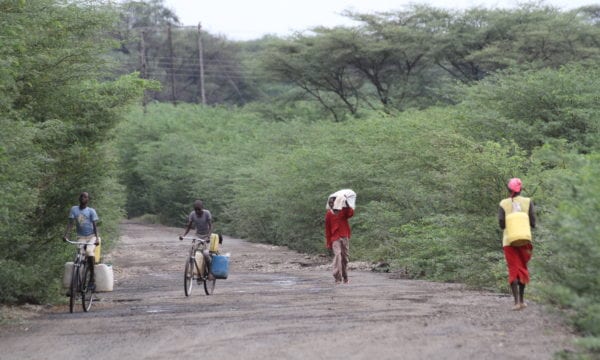Woody weeds in East Africa
Many exotic trees and shrubs have been introduced into Africa and become destructive invasive species. They’re reducing native biodiversity and limiting the livelihoods of those that live in rural communities. CABI is trying to mitigate these impacts in East Africa by generating and sharing knowledge on their effects and finding ways that they can be controlled.
Project Overview
So, what’s the problem
Many exotic trees and shrubs have been introduced into Africa, but a few have escaped cultivation and become destructive alien invasive species reducing native biodiversity and limiting the livelihoods of those that live in rural communities.
Woody species such as invasive Prosopis spp, Lantana camara and Chromolaena odorata are some of the worst offenders. In South Africa alone, the costs to ecosystem services were estimated at USD 1 billion per year.
Some developed countries have rolled out large programmes to mitigate the negative impacts of woody invasive species. But in Eastern Africa, where those living in rural communities are more vulnerable to the impacts of invading species, there is a lack of coordinated and effective sustainable management of woody alien invasive species.
What is this project doing?
The aim of the project is to mitigate the negative effects of woody invasive alien species on biodiversity, ecosystem services and human well-being in East Africa.
To achieve this goal, the team will generate and share knowledge on how the invasive species establish and spread and on the effects and impacts of the invaders in the different contexts of Ethiopia, Kenya and Tanzania. The project team will also develop and improve measures for controlling the species, which will be built into ‘Sustainable Land Management’ strategies that will help the countries to mitigate the impacts of the species.
Activities:
- assessing the relationship between abundance of the invasive and their impacts at a local level
- mapping current and potential future distribution of selected woody invasive alien species in case study areas on local and country level and using this information to raise awareness of the problem
- developing and evaluating management options: biological, physical and chemical control
- developing, testing and disseminating strategies to mitigate negative effects of woody invasive species
Geographic scope
The project will be implemented in Ethiopia, Kenya and Tanzania. In each country, the activities will primarily focus on one case study area and selected focal species.
To understand how the effects of woody invasive species upscale from the local to the national level, small-scale field studies will be combined with field surveys, remote sensing and species distribution modelling using GIS-based spatial analysis to assess the current and potential distribution of selected woody invasive alien species in the study areas.
The project’s research findings will inform the development of practical mitigation strategies from the local to the national scale and, underpinned by active engagement with policy-makers, lead to the development of a policy environment that is conducive for widespread application of sustainable land management approaches that will mitigate the negative impacts of woody invasive alien species.
Results
The initial ‘Woody weeds’ project finished in 2021. The project generated knowledge about the invasion of Prosopis which has invaded approximately 1.3 million ha in Ethiopia’s Afar region (over 14% of their total area) and is likely to continue spreading. Prosopis is also increasing in Baringo, Kenya.
Water consumption by this evergreen Prosopis alone is approximately equivalent to the total rainfall in the invaded area. Both in Afar and in Baringo County in Kenya, Prosopis invasion significantly reduces fodder for livestock and local biodiversity, including medicinal plant species.
Our experimental studies showed that another woody invader, Lantana camara, negatively affects crop plant growth. Stakeholders in the invaded area must therefore invest more money in weeding their crop fields than stakeholders in uninvaded areas. Moreover, our research show that invasion by Lantana and another invasive shrubs, such as Chromolaena odorata, reduces biodiversity in grasslands.
Through the six years of the project, cooperation with stakeholders from local and national levels in the three target countries was key to understanding the social and ecological effects of the two species and how to manage them.
In the future, both Prosopis and Lantana are likely to spread further in eastern Africa, increasing the overall impact on biodiversity, ecosystems services and rural livelihoods.
Woody Weeds+
Woody Weeds + was launched in 2021 and will build on the previous work but will support a National Prosopis Strategy for Kenya, helping to sustainably manage the invasive weed.
Woody Weeds+ will focus on Kenya but opportunities are being explored to continue activities in Ethiopia and Tanzania. As a result, in Lake Natron Basin in northern Tanzania, CABI is supporting the implementation of the Tanzanian National Invasive Species Strategy and Action Plan with a focus on Prosopis juliflora.
For more information visit the Woody Weeds website.
Project Manager

Partners
University of Stellenbosch, South Africa
Centre for Training and Integrated Research in ASAL Development, Kenya
Center for Development and Environment, University of Bern
Centre for Development and Environment (CDE) (Switzerland)
Centre of Excellence for Invasion Biology (CIB) (South Africa)
Tanzania Forestry Research Institute (TAFORI) (Tanzania)
Sokoine University of Agriculture (Tanzania)
Kenya Agricultural and Livestock Research Organisation (KALRO) (Kenya)
Haramaya University (Ethiopia)

